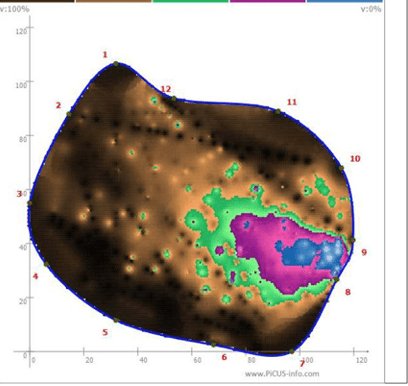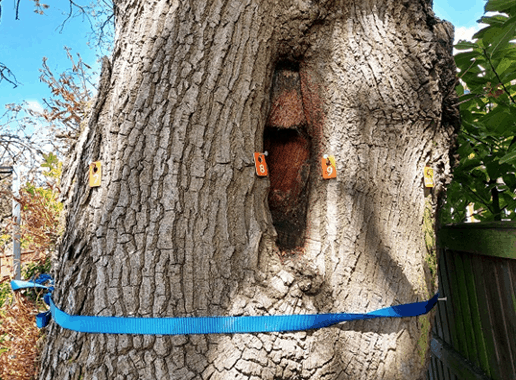PiCUS Test For Tree Decay
Trees have co-evolved with many of the pests and diseases that they encounter throughout the course of their life and created various methods of countering the possible problems that can be experienced. These range from the production of thorns to additional chemicals created in their leaves to deter a browsing animal through to their ability to sense stresses in their structure resulting in the production of additional wood to stabilise themselves.
Fungi is a good example of a biological agent encountered by many trees which can have a varied impact depending on the type of fungi and the tree itself. Some fungi form symbiotic relationships with trees and can be beneficial such as Mycorrhizas, however, there are many fungi which can causes wood decay, although this decay is a natural part of a tree’s life cycle. Wood decay is the degradation and dismantling of cell structures within the wood that can lead to failures of parts or all of a tree, conversely a tree can co-exist with such decay fungi for decades and not be considered an unacceptable risk. Understanding how the wood is degraded and being able to estimate as accurately as possible the cavity formation and the loss of wood strength is key to the retention of trees within our streets, parks, and gardens whilst being confident that their structures have not been significantly compromised by any decay that is occurring.

The Brown shows areas of sound wound with blues and purple are areas of decay.

What Is A PiCUS Test for Tree Decay?
The PiCUS 3 Sonic Tomograph is a piece of equipment which uses sound waves to help us determine the density of the wood in a cross section of a tree. The PiCUS 3 measures the differing velocities at which the sound travels through the wood and the PiCUS 3 Software uses the data that It acquires in the test to give a pictorial image of the estimated areas of decay. Sound waves generally travel faster through sound wood than through decayed or damaged wood and these differences are represented by different colours. The test itself is mildly invasive as nails need to be applied to the tree through the bark, however, from experience these small holes are occluded quickly causing no long-term issues to the tree. The images below show a large wound on the stem of an Oak tree that a client was concerned about, a PiCUS test revealed that the decay was limited in extent and the tree was deemed to be in an acceptable condition and has been retained.
Do I need a PiCUS Test?
The first step in any investigation will be to contact a qualified tree expert to assess the tree visually. If enough information can be gained through a visual inspection, then there is no need for a PiCUS test. If, however, there is evidence of decay and the extent of the decay cannot be ascertained then in some cases a PiCUS test will be required to help inform the management decision.
Reach Us
If you would like to chat to us to discuss a tree survey contact us on:
32 Thirlmere Road, Urmston, M41 8US
